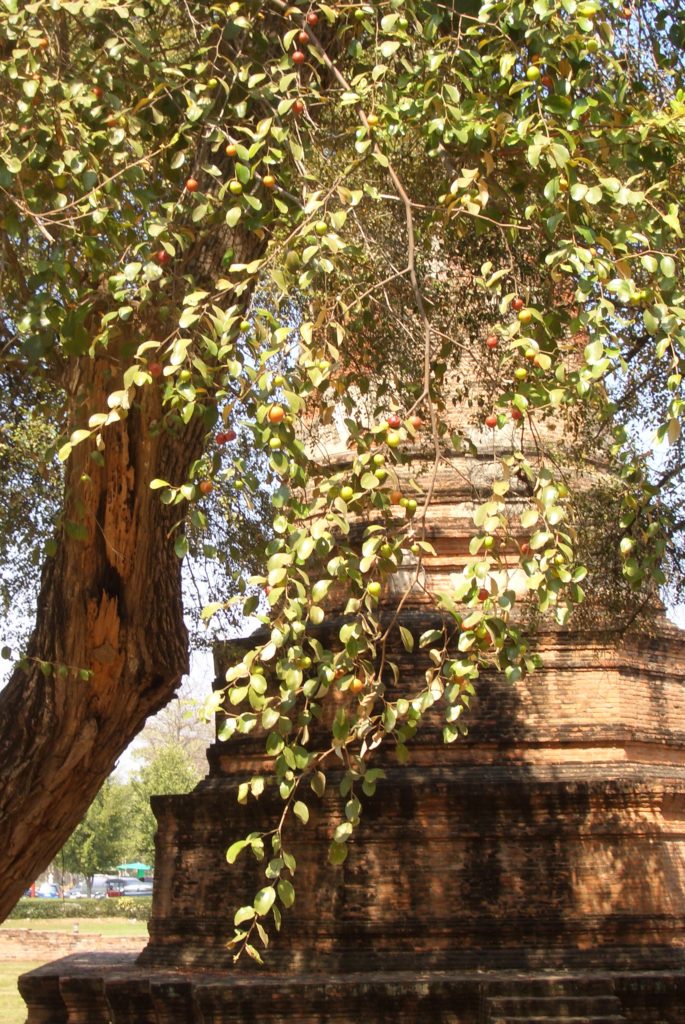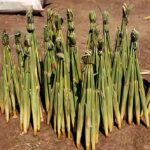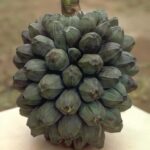The Ayutthaya Historical Park covers the ruins of the old city, which was founded by the Khmer in 850 AD and named after the Hindu holy city of Ajodhya. The city was destroyed by the Burmese in 1767 and has been a UNESCO World Heritage site since 1991. It is also famous for its Jujube trees.



History of Jujube trees at Ayutthaya
King Naresuan (1556-1605) had his residency at Ayutthaya, and after a battle with the Burmese, he ordered to plant hundreds of Jujube trees (Ziziphus jujuba) all over the palace. At a decisive battle with the Burmese, his elephant stumbled, and he nearly fell but was held up by a Jujube tree, which saved his life. Otherwise, he would have fallen from the elephant and been at the mercy of the advancing Burmese hordes.
Since planting, he invited people to freely pick Jujube fruit from these trees to instill some sense of civic pride in them. After the remaining buildings and pagodas were declared a World Heritage Site, Princess Maha Chakri Sirindhorn was ordered to conserve 762 Jujube trees on site, and the inhabitants of the town of Ayutthaya were allowed to collect the fruit for free. Since then, collecting ripe Jujube fruit at the old Ayutthaya palace area has been a welcome pastime for many Thais.
Some facts about Jujube fruits
Jujube fruit (also called Red date, Chinese date, and other common names) is used in a variety of preparations, but mostly fresh, dried, or smoked, in some kind of marmalades, juices, or even as or in spirits. Its distribution ranges from Bulgaria over the Near East, Middle East, and South Asia to the Far East. Jujube fruits got a calorific value of 287 kcal/100g.
Lessons learned from Jujube trees at Ayutthaya Historical Park:
- King Naresuan ordered the planting of these trees at the current location and invited the population to collect the fruits
- Princess Maha Chakri Sirindhorn reestablished this old custom
.




